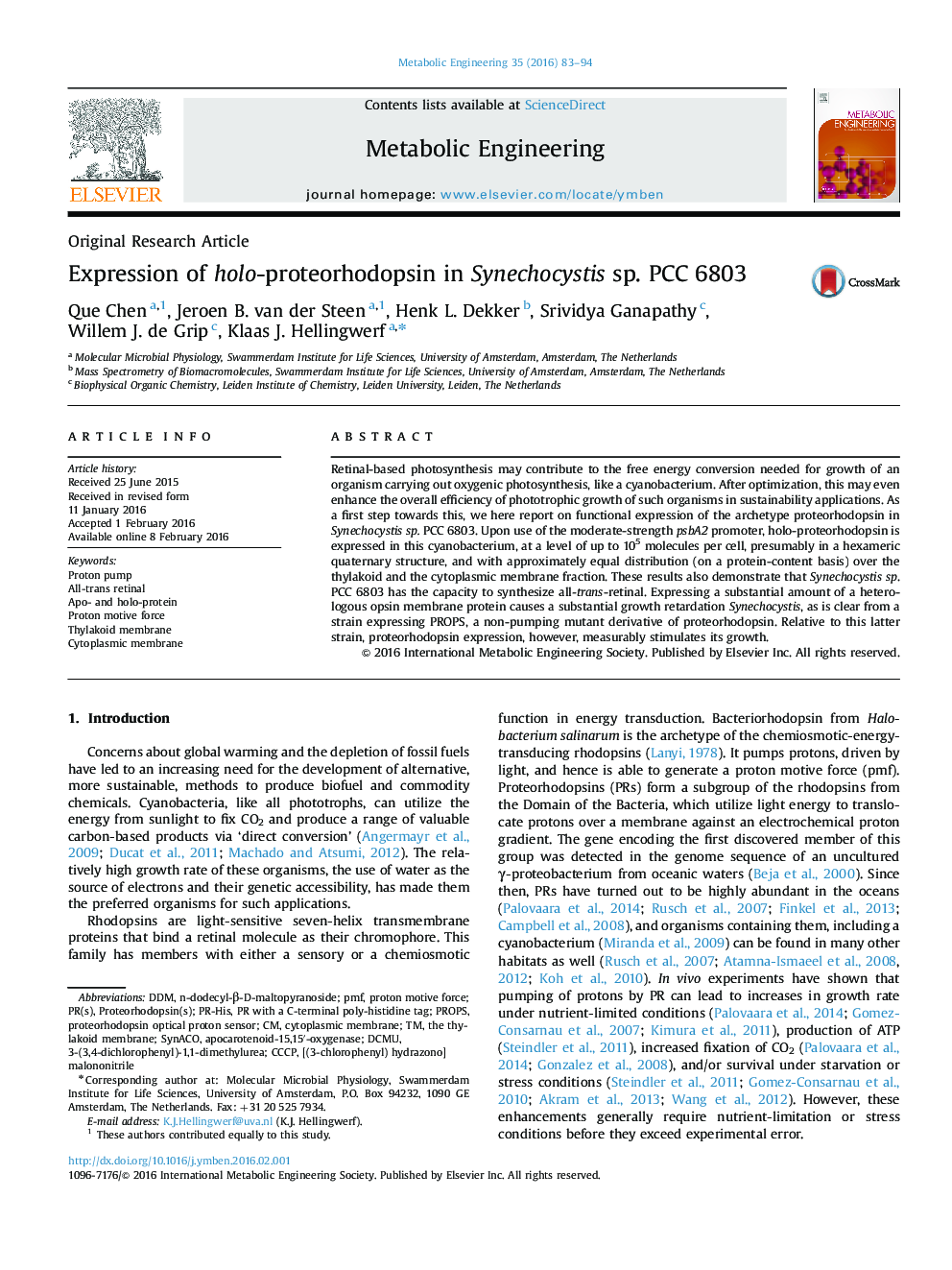| Article ID | Journal | Published Year | Pages | File Type |
|---|---|---|---|---|
| 31497 | Metabolic Engineering | 2016 | 12 Pages |
•Here we show that proteo-opsin can be expressed up to levels of 105 molecules per cell in membranes of Synechocystis sp. PCC6803.•The heterologously expressed protein is equally distributed (based on amount of protein) over thylakoid- and cytoplasmic membranes.•Synechocystis sp. PCC6803 is able to synthesize all-trans retinal and generate proteorhodopsin without requiring to add external retinal.•Proteorhodopsin expressed in Synechocystis sp. PCC6803 can make a measurable contribution to light-energy conversion in this cyanobacterium.
Retinal-based photosynthesis may contribute to the free energy conversion needed for growth of an organism carrying out oxygenic photosynthesis, like a cyanobacterium. After optimization, this may even enhance the overall efficiency of phototrophic growth of such organisms in sustainability applications. As a first step towards this, we here report on functional expression of the archetype proteorhodopsin in Synechocystis sp. PCC 6803. Upon use of the moderate-strength psbA2 promoter, holo-proteorhodopsin is expressed in this cyanobacterium, at a level of up to 105 molecules per cell, presumably in a hexameric quaternary structure, and with approximately equal distribution (on a protein-content basis) over the thylakoid and the cytoplasmic membrane fraction. These results also demonstrate that Synechocystis sp. PCC 6803 has the capacity to synthesize all-trans-retinal. Expressing a substantial amount of a heterologous opsin membrane protein causes a substantial growth retardation Synechocystis, as is clear from a strain expressing PROPS, a non-pumping mutant derivative of proteorhodopsin. Relative to this latter strain, proteorhodopsin expression, however, measurably stimulates its growth.
